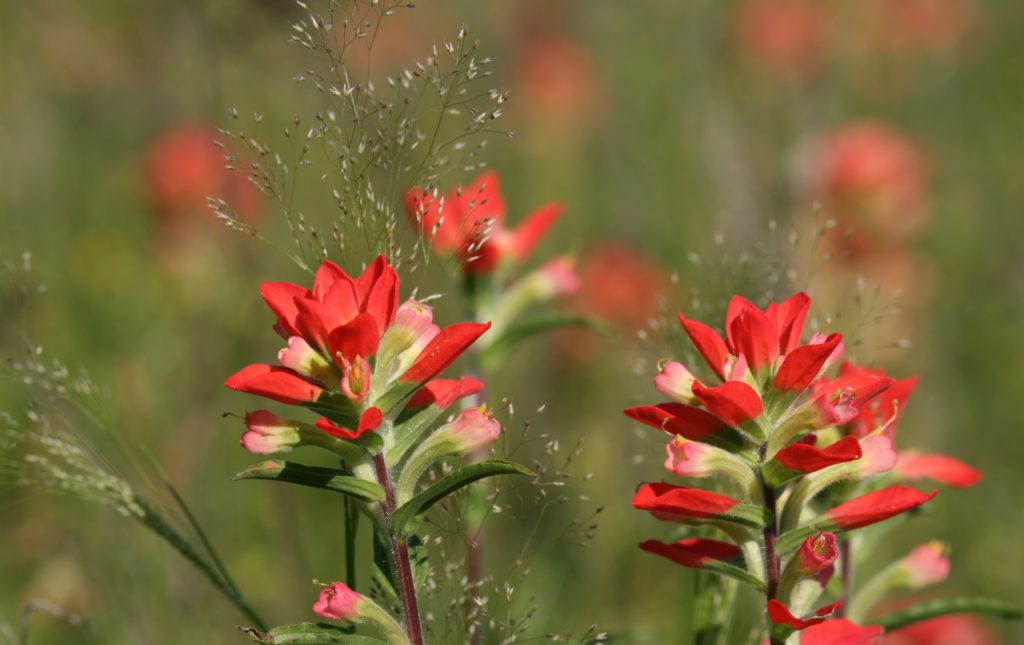Paintbrush, in all its many forms and colors, captures the heart like few other Texas wildflowers. It doesn’t hurt at all that it blooms at just about the same time as the beloved Texas Bluebonnet, so tends to lend a crimson counterpoint to the opulent fields of blue. It’s as if a giant with a paintbrush made bold stokes across whole hillsides.

On our little refuge we don’t have Bluebonnets, and we have just one species of Paintbrush (Castilleja indivisa), but within that one species individuals are clear red, peach, pale yellow, coral, or even bright pink-red individuals. The colors look like they’ve been designed by a makeup company. If you can imagine a lipstick color that isn’t too edgy, Paintbrushes probably come in that color. I never tire of exploring during Paintbrush season to see what new color variations I might find.
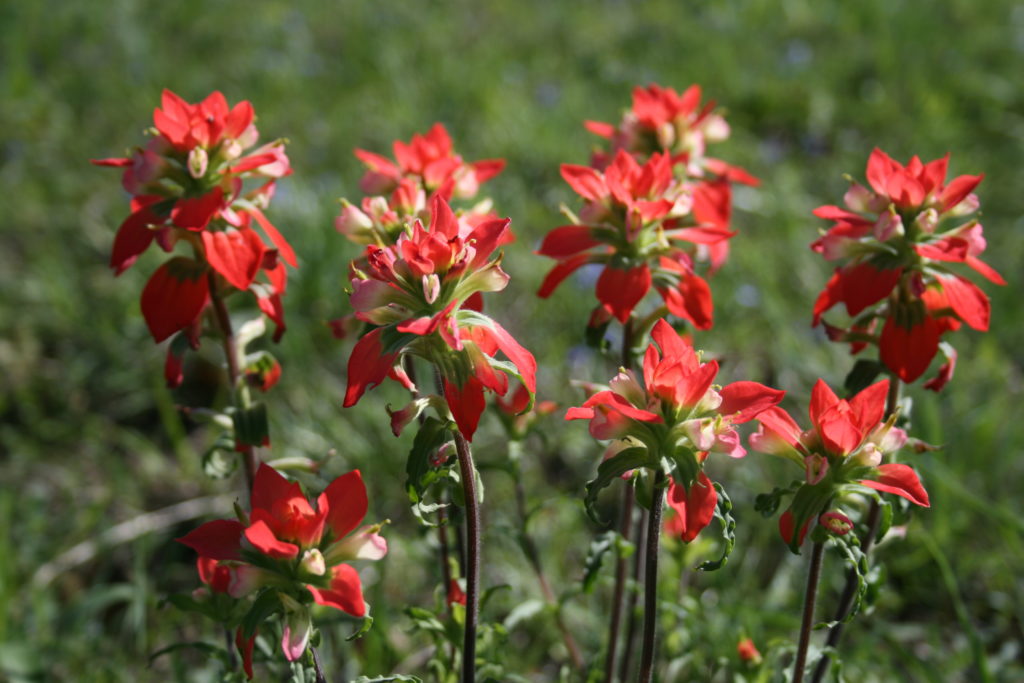

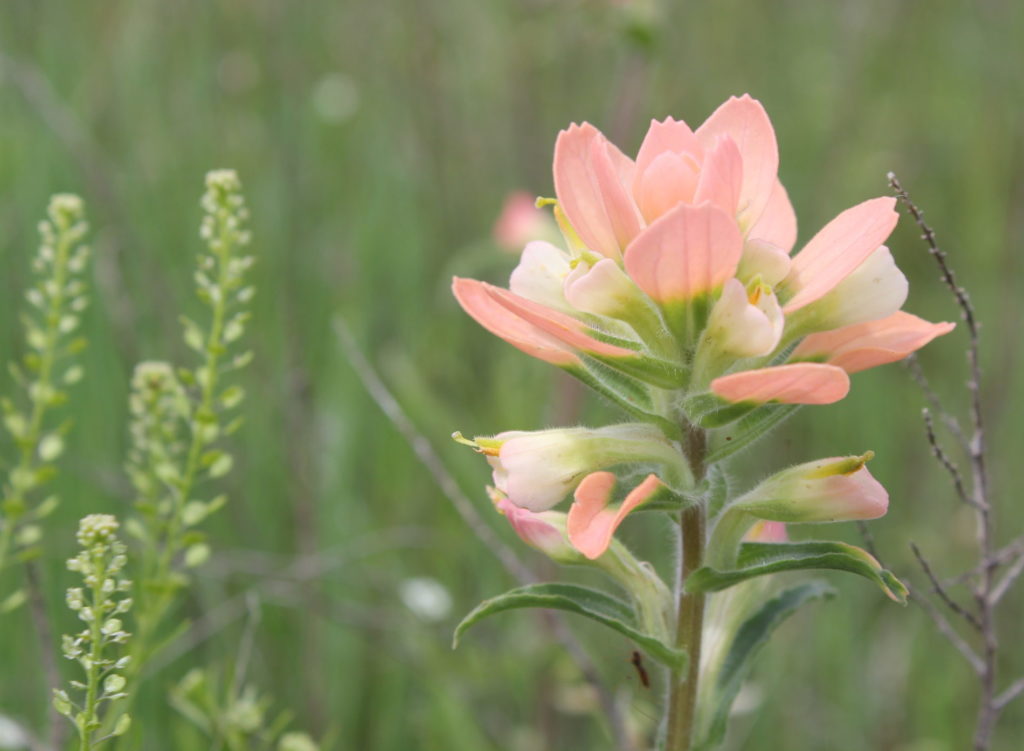
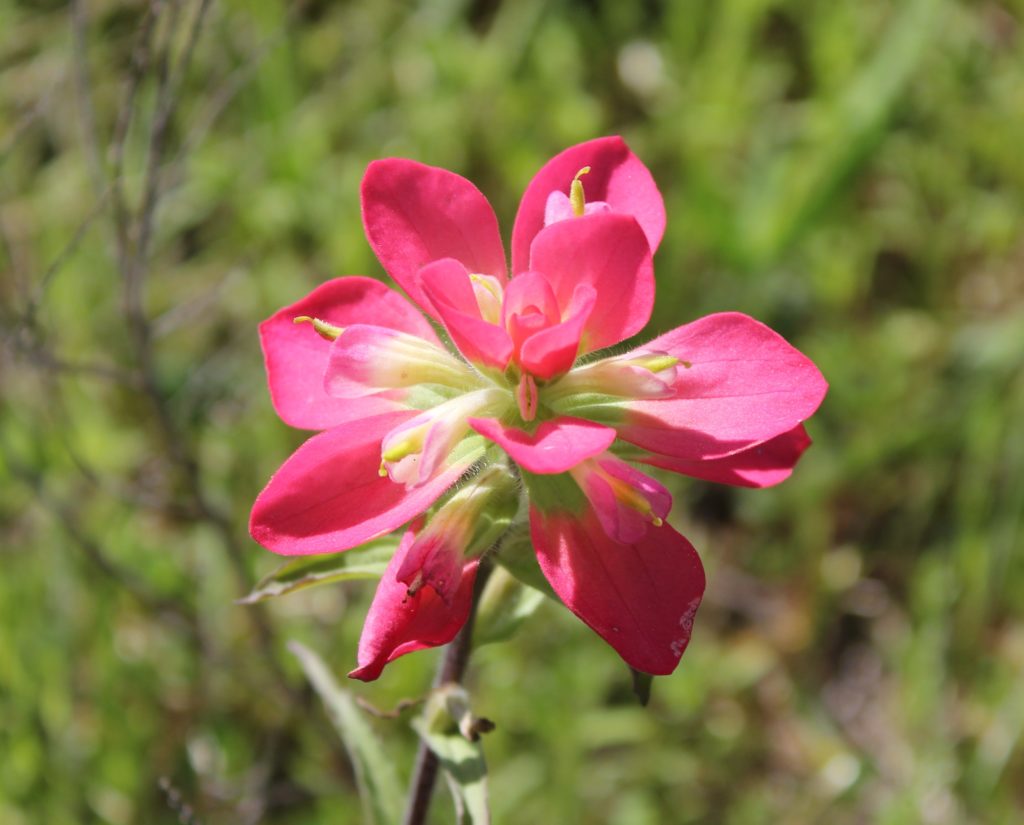
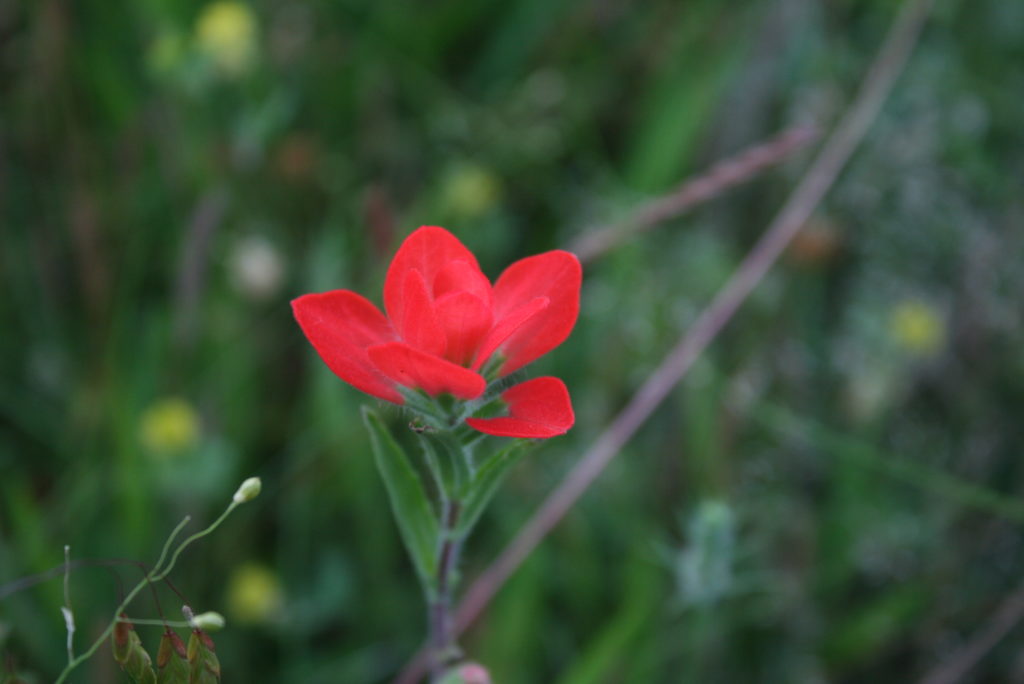
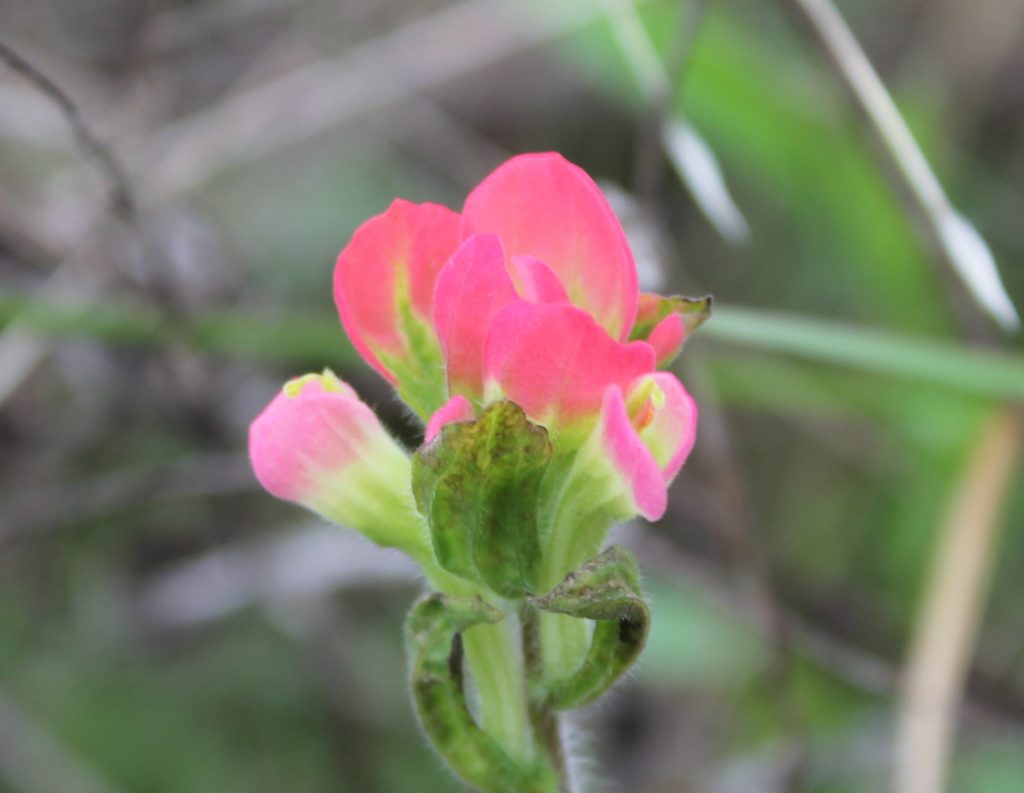

Paintbrushes make their living partly by taking nutrients from other plants around them. Their roots join with the roots of nearby plants and drain off some of the nutrients. This semi-parasitic lifestyle is not “evil”: it’s just nature, and that’s the way they operate. It does mean, however, that Paintbrush is not used in gardens often. It’s not a plant that really wants to be tamed. I think it only adds to their charm that you have to go visit them where they live.
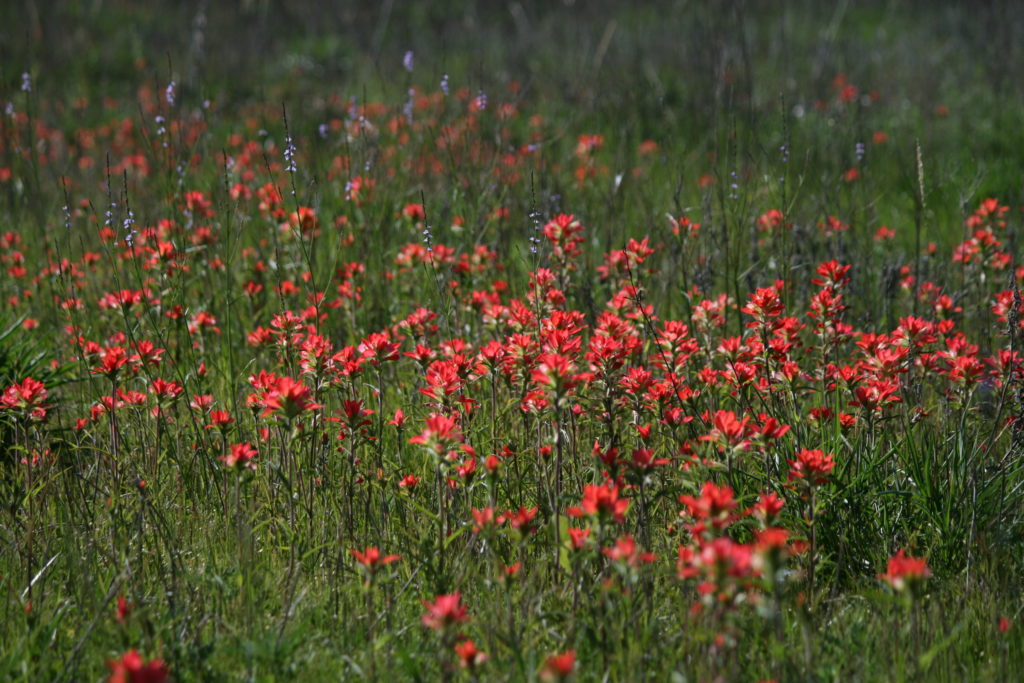
Not far from our land, there are other Castilleja species, even more beautiful than the ones we have. Or maybe this is just the Paintbrush version of the grass always beeing greener on the other side of the fence. In any case, I’m a little envious of the places that Castilleja purpurea. The perennial species Castilleja purpurea has more frills and also comes in a range of colors, brom a deep rich purple, deep salmon, though pink and lavender. Some are a clear yellow, exactly like high quality Lemon Chiffon ice cream. (It’s fine, I’ll wait right here ’til you run to the freezer and back.)

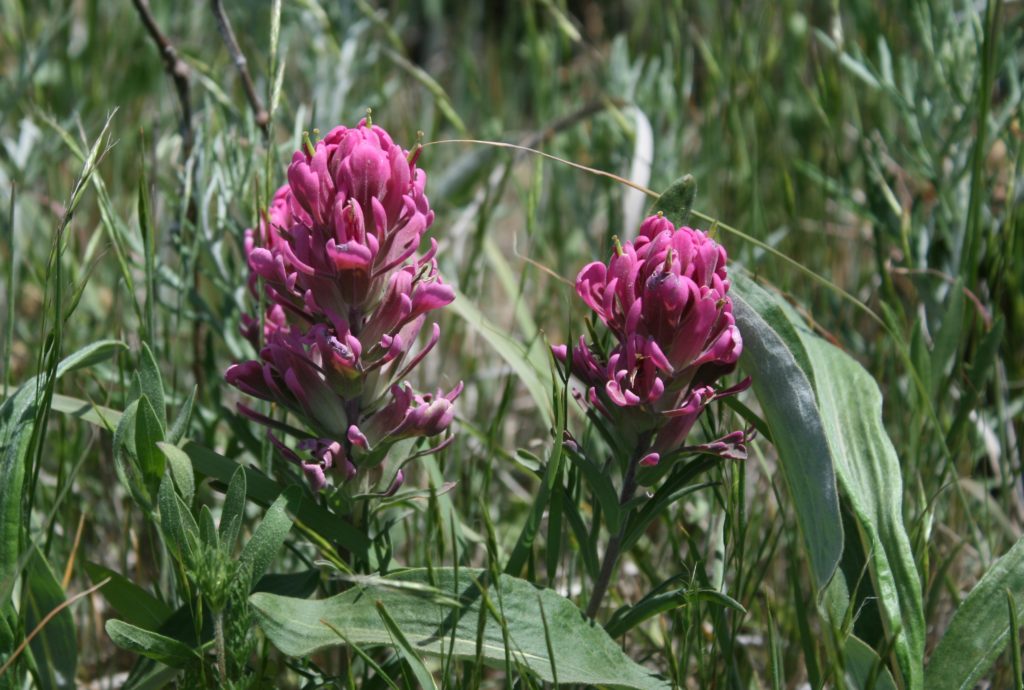

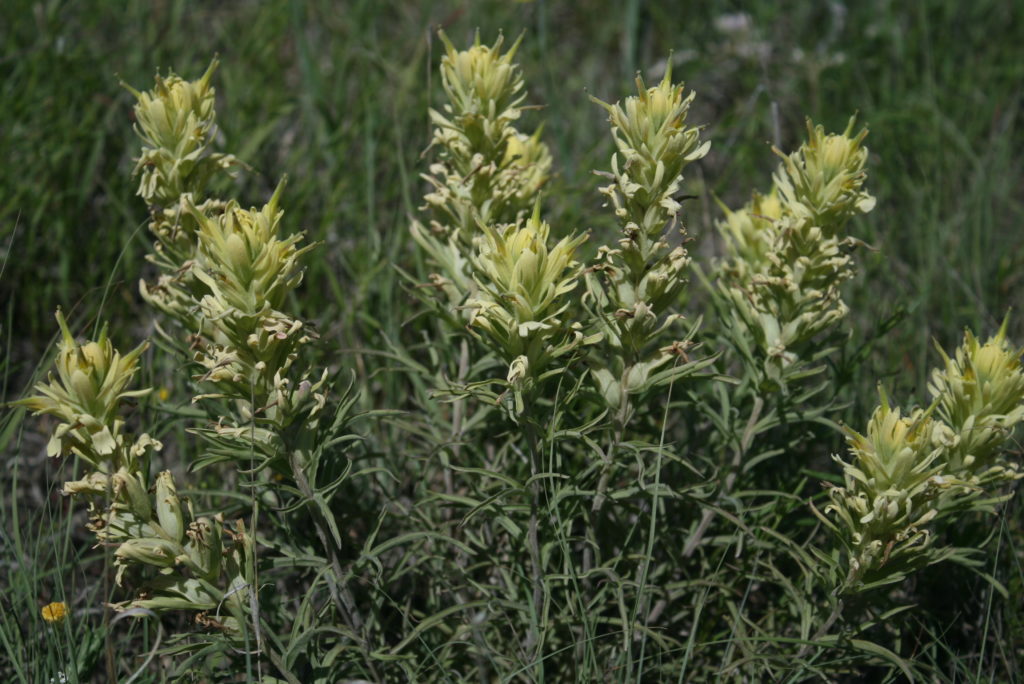
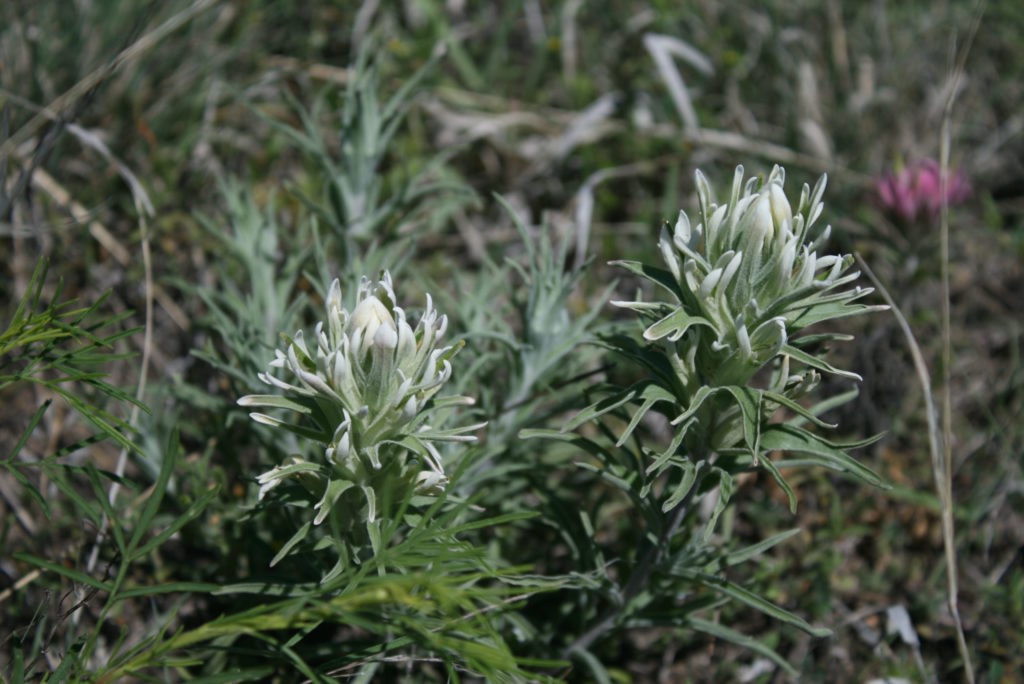
All the Paintbrush species are apt to fool beginning nature watchers. Much of the color on a Paintbrush inflorescence is actually on the brightly colored bracts, while the flowers themselves are less showy—little tubes tucked down inside the painted bracts.

Paintbrush is attractive to butterflies, bees, moths, and hummingbirds. Some use their long tongues to gather nectar from the flowers, but others just nip a hole near the back and nectar rob from there. Carpenter Bees do that for lots of long tubed flowers, including Paintbrush. Monarchs find Paintbrushes especially useful, since they bloom during the spring migration when the adult butterflies need nectar supplies to keep flying.
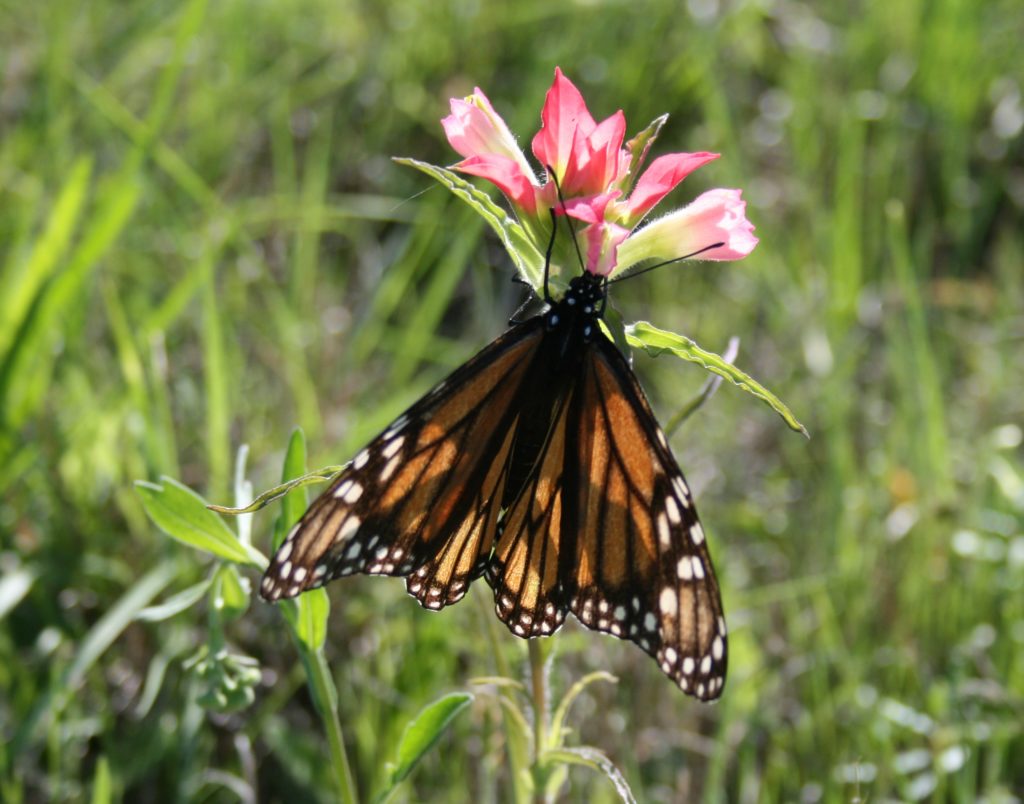
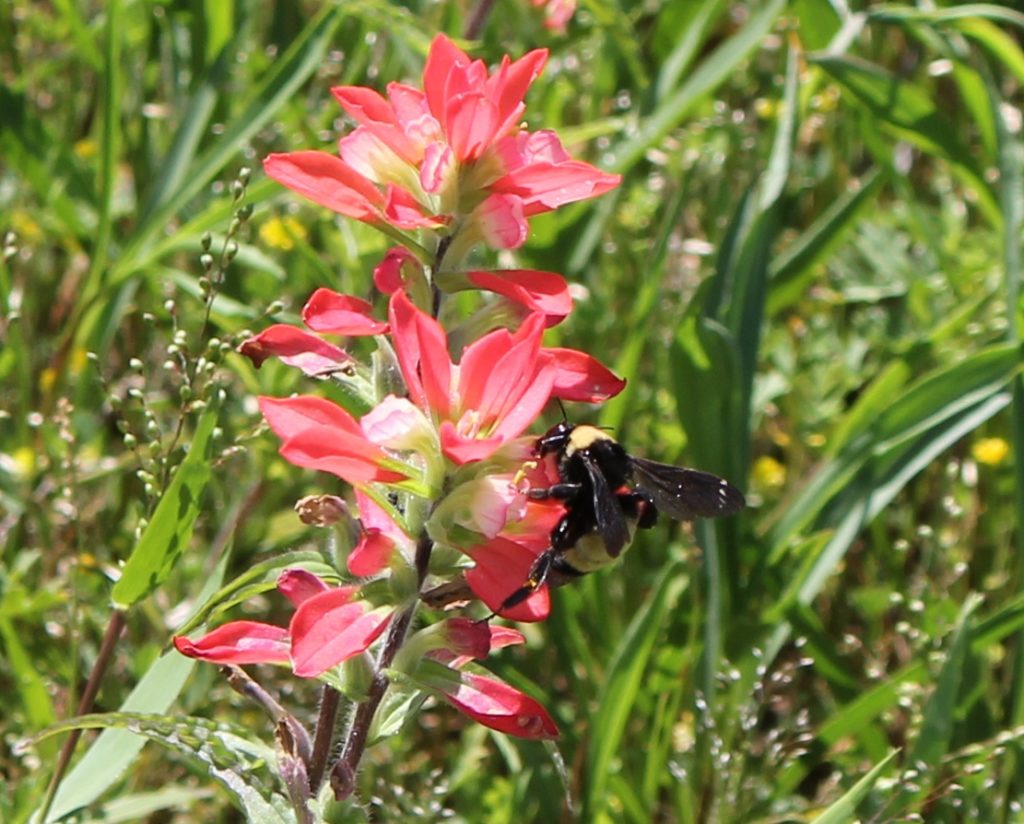

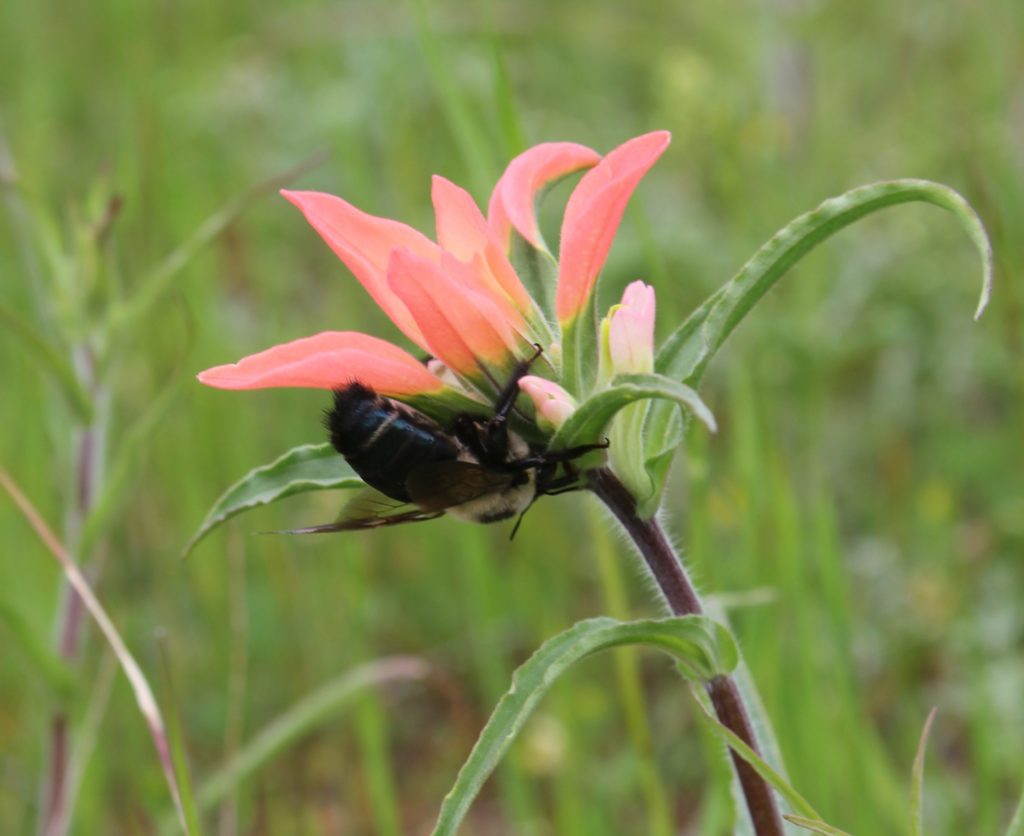
Everyone is social distancing this week, but if you can, try to take a quick country drive in Texas and get out of the car somewhere where you can inspect some Paintbrush. Its beauty in the landscape is equaled by its beauty up close.
